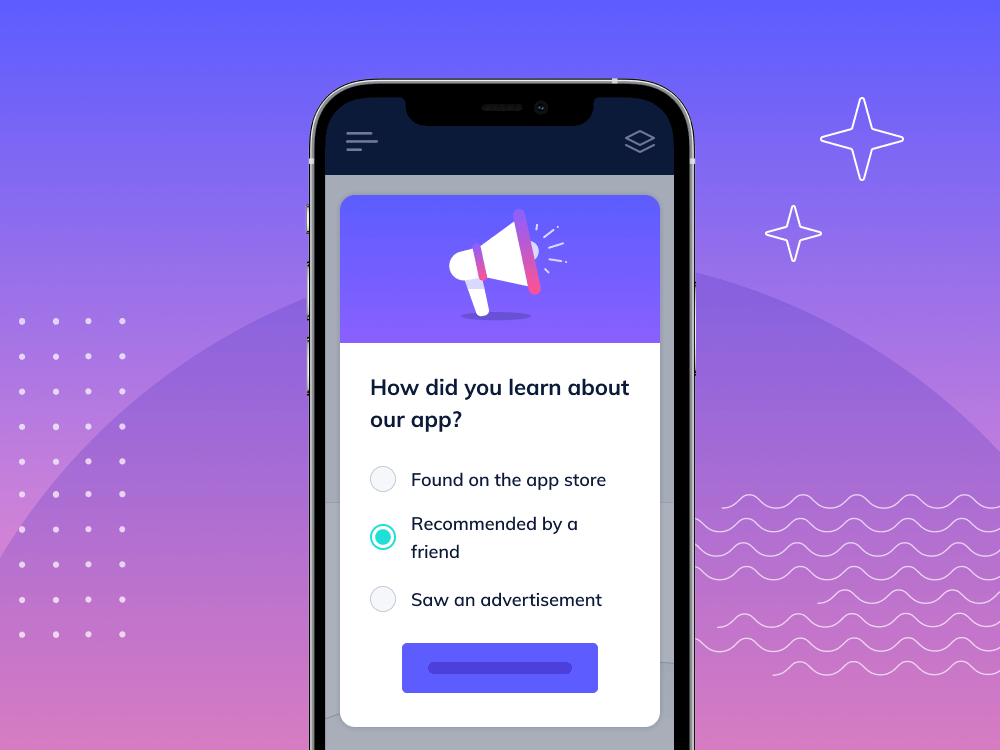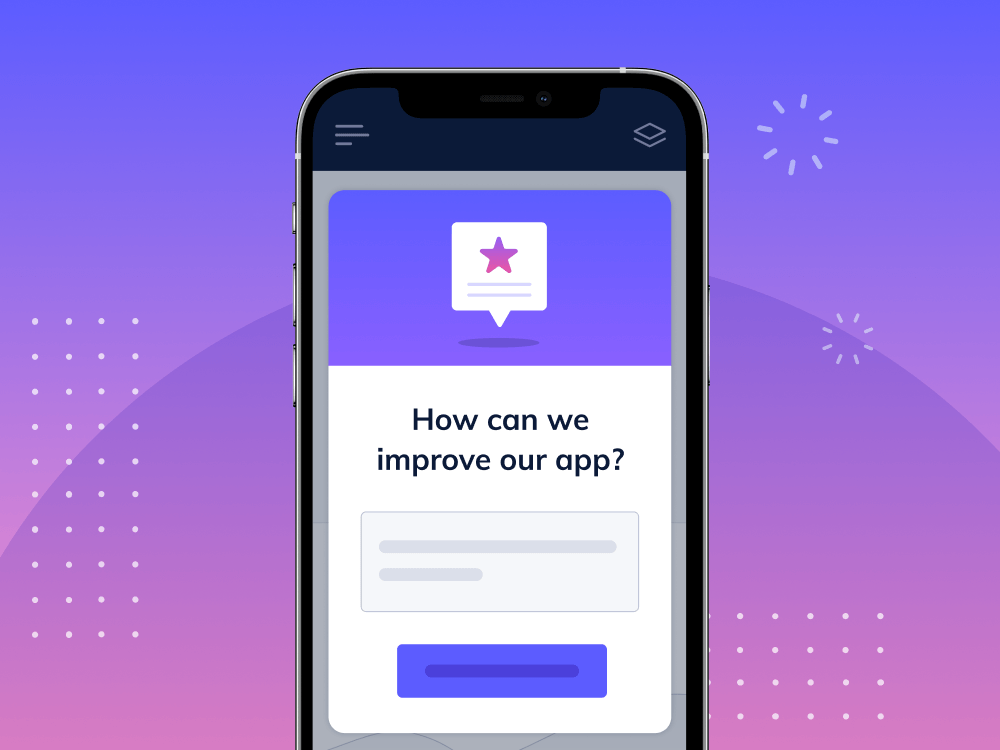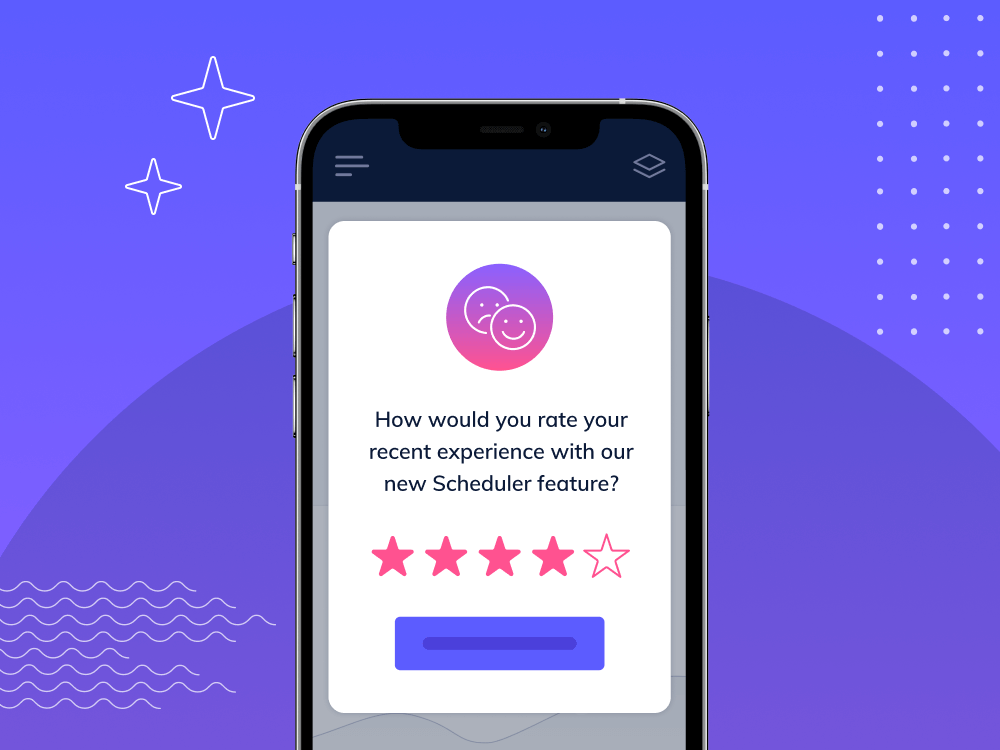Engage with your mobile customers better with in-app surveys

.png)

.png)
User surveys can provide an incredible layer of insight and information. These, in turn, help your organization make data-driven decisions that improve overall user experience.
The ability to dish up surveys in your mobile app can provide valuable insights into how users are interacting with, experiencing, and feeling about your app. (Not to mention, users are usually much more responsive to in-app surveys than other channels, like email.) That means more feedback for your team to act on.

That’s why Appcues Mobile now allows you to conduct mobile surveys directly in your native mobile applications—without needing engineering or developer resources. Designed for you to dig deeper with your app users, mobile surveys are a great option for gathering user feedback in real time.
Appcues mobile surveys support a variety of question types so you can build surveys that meet your needs:

Surveying your users can give you a deeper understanding of who they are, what they want, and how they interact with your app—arming you with the data you need to make decisions that improve the overall user experience. You can also use surveys to gather customer data (think demographics, interests, and behaviors), which can be handy for targeted marketing and personalization.
Some example questions:

By better understanding user needs and motivations, you can deliver tailored content and experiences that make them more likely to engage with your app. This is especially helpful when creating your user onboarding experience. Remember: don’t serve up a one-size-fits-all approach— customize the experience to fit the user's individual needs instead.
Some example questions to use:

Surveys designed to answer specific product questions—like feedback on new features, recent app changes, your product roadmap, and overall user experience—are the most common use cases we see. Well-timed surveys at specific areas of user drop-off can also help identify core areas of potential friction.
Some example questions to use:

It can be hard to make improvements to your product if you don’t have a core baseline for user satisfaction. Regular survey pulse checks help you understand how users are feeling about your app so that you can establish a baseline, identify areas for improvement, and measure progress.
Some example questions to use:
This goes hand-in-hand with tracking sentiment, but surveys are also a valuable way to capitalize on positive user feelings. For users who give low scores, push them to explain their frustration—and for users who give top scores, encourage them to leave a positive app store review in real-time. Users are much more likely to leave a review when they are asked to do so in the moment, and those testimonials can do wonders for your app's reputation and downloads.
Surveying your users can produce invaluable insights for your team, but this wouldn’t be a thorough blog post if we didn’t include some best practices. So let’s get into it:
When you send a survey is just as important as what you send. It can be hard to find the right moment to survey, but you shouldn’t interrupt users when they’re too new or when they’re in the middle of trying to do something. Here are some great times to ask for feedback:
Additionally, make sure to avoid over-asking. Survey fatigue is real, and it will drive users away from your app.
Think about the survey content you’re serving up and how it’s going to be perceived by your audience. Here are some things to consider:
You probably saw this coming after the last 2 sections, but the most important piece of surveying is to make sure you’re hitting the right audience.
Segment your users effectively to make sure the questions you’re asking are relevant (e.g., if the survey is about a specific feature, use segmentation to make sure the audience you survey has actually seen that feature).
Most importantly, survey feedback is only valuable if your team acts on it. Ensure your team is monitoring survey responses and acting on feedback to create a better experience for your users. Act on negative product feedback, follow up with users to learn more, segment your customers based on their sentiment, map out user journeys based on feedback—whatever the case may be, just be sure your team is taking the necessary steps to make use of those valuable insights.
And when you use a tool like Appcues, you can track all your survey responses right in-app—right where you can act on them. 🤓

Ready to get more feedback from your mobile app users? Book time with our team of experts.